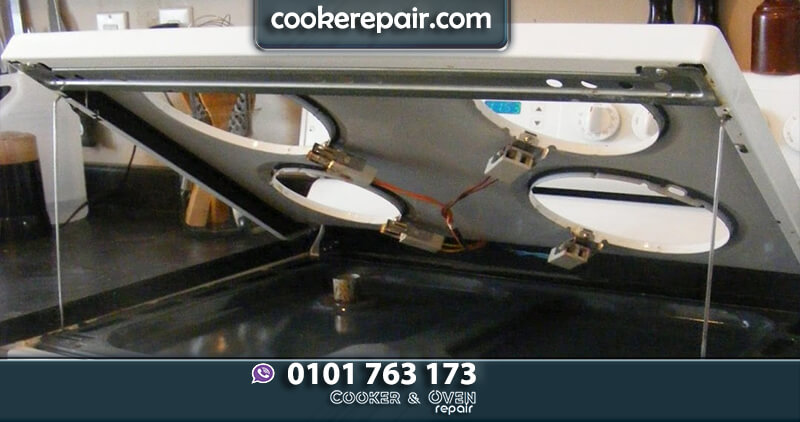Hob Not Heating Properly: Cooker Fix and Solutions
A hob not heating properly can disrupt your cooking routine and become a source of frustration. Whether you have an induction, ceramic, or gas hob, understanding the potential causes and solutions is essential. In this article, we’ll explore the common reasons behind a malfunctioning hob and provide step-by-step instructions on how to fix it.
Common Causes of a Hob Not Heating Properly
Several factors can contribute to a hob not heating correctly. Identifying the underlying issue is the first step toward a successful repair.
1. Burner or Heating Element Malfunction
- Gas Hob: A clogged or damaged burner might result in uneven or insufficient heating.
- Electric/Induction Hob: Faulty heating elements or coils can reduce the hob’s ability to generate heat effectively.
2. Thermostat Issues
- The thermostat regulates the temperature of the hob. If it’s malfunctioning, the hob may overheat or fail to heat up properly.
3. Power Supply Problems
- Inconsistent or insufficient power supply can hinder the hob’s performance. For electric hobs, this could mean a wiring issue, while for gas hobs, it could be due to gas flow problems.
4. Control Panel Malfunctions
- Modern hobs often feature electronic control panels that can fail due to wear and tear, leading to improper heat regulation.
5. Sensor Failures (Induction Hobs)
- Induction hobs rely on sensors to detect cookware. If these sensors fail, the hob may not heat at all or heat unevenly.
“A hob that doesn’t heat properly often signals an underlying mechanical or electrical issue that requires attention.”
Step-by-Step Guide: Fixing a Hob That’s Not Heating Properly
Before starting any repairs, ensure the hob is disconnected from the power supply or gas line for safety.
1. Diagnosing the Problem
- Gas Hob: Check if the burner ignites. If not, clean the burner with a brush to remove debris.
- Electric Hob: Inspect the heating element for visible damage like burns or cracks.
- Induction Hob: Verify that compatible cookware is being used, as induction hobs only work with magnetic pots and pans.
2. Cleaning and Maintenance
- Gas Hobs:
- Turn off the gas supply.
- Remove the burner caps and clean them with warm soapy water.
- Use a pin to clear any blockages in the burner holes.
- Electric/Induction Hobs:
- Clean the surface with a damp cloth.
- For induction hobs, ensure the glass surface is free of grease and residue to maintain sensor functionality.
“Regular cleaning not only resolves heating issues but also prolongs the life of your hob.”
3. Replacing Faulty Components
- Heating Elements:
- For electric hobs, replace burned-out elements by unscrewing and disconnecting the faulty part and installing a new one.
- Induction hobs may require replacing the coil plate or sensors, which should be done by a professional.
- Thermostats:
- If the hob’s temperature regulation seems off, the thermostat might need replacement. This typically involves removing the hob’s top panel to access and swap out the faulty thermostat.
4. Inspecting the Power/Gas Supply
- Electric Hobs:
- Ensure the power cord is intact and the circuit breaker hasn’t tripped.
- If there’s a wiring issue, consult an electrician.
- Gas Hobs:
- Check the gas valve to ensure it’s open.
- Inspect the gas hose for kinks or leaks. Replace if damaged.
5. Resetting the Hob
- Many modern hobs have a reset function that can resolve minor glitches. Refer to the user manual for specific instructions on how to reset your model.
When to Call a Professional
While minor issues can often be resolved at home, some situations require expert attention. Call a professional technician if:
- The heating elements or gas burners need replacement.
- The control panel or electronic circuits are malfunctioning.
- The hob continues to underperform after basic troubleshooting.
“Attempting complex repairs without the right expertise may cause more harm than good. Always consult a professional for significant issues.”
Preventive Tips to Keep Your Hob Working Efficiently
- Clean Regularly: Clean the hob after every use to prevent debris buildup.
- Inspect Components: Periodically check the burners, heating elements, and gas supply lines for wear or damage.
- Use Proper Cookware: Ensure you use compatible cookware, especially for induction hobs.
- Avoid Overloading: Don’t use pots and pans that are too heavy, as they can damage the hob’s surface and heating components.
A hob that’s not heating properly can be a hassle, but with proper diagnosis and care, it can often be repaired without significant expense. Start with basic troubleshooting steps like cleaning and inspecting components, and replace faulty parts if necessary. For more complex repairs, rely on professional technicians to ensure the job is done correctly.
Regular maintenance and proper usage can help you avoid such issues altogether and extend the lifespan of your hob. Whether it’s a gas, electric, or induction hob, keeping it in top shape ensures your cooking experience remains smooth and efficient

